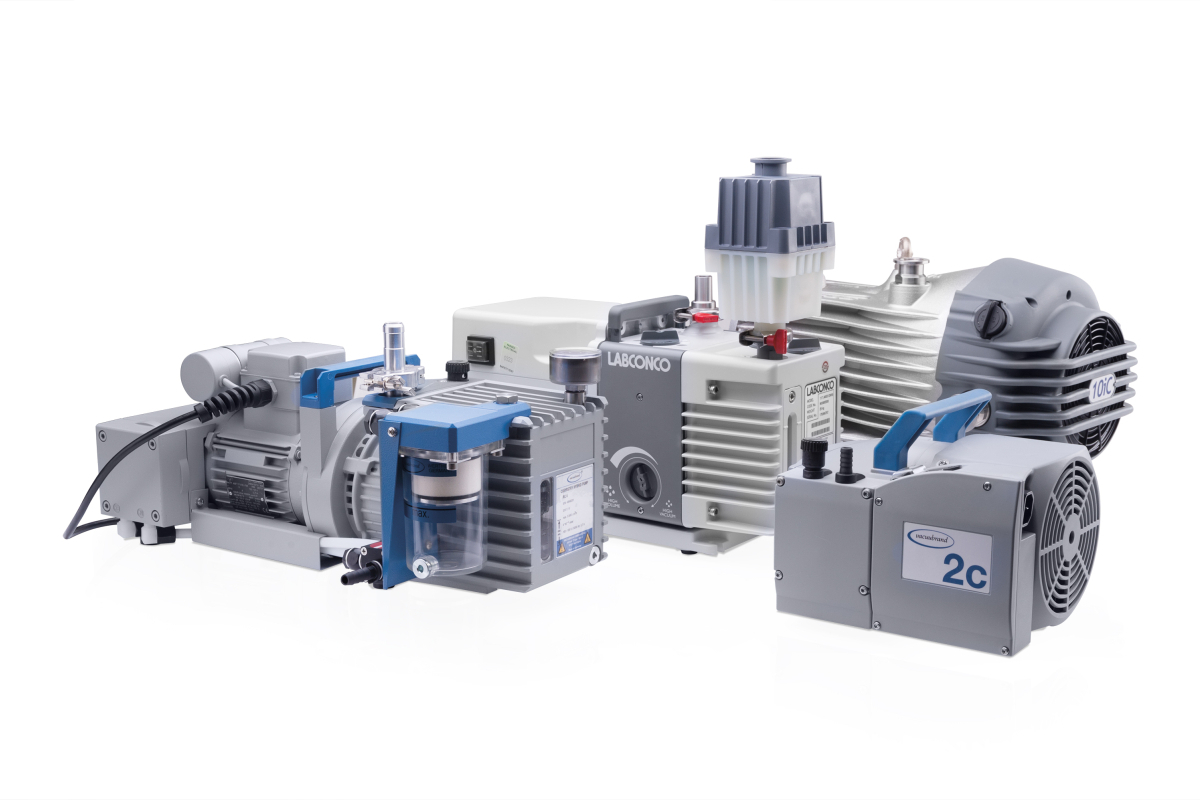4 questions to consider before buying a lyophilizer

Lyophilization, commonly referred to as freeze drying, is used to process samples for long term storage or as a sample prep step.Using the process of sublimation, wherein a sample changes from a solid to a gas, moisture is removed from the sample using heat and a deep vacuum.This vapor is then collected on a cold coil in the form of ice.In order to choose the correct lyophilizer for your sample throughput, consider the following questions:
1. What type of samples are you processing?
Knowing what components make up your samples is important.In order to effectively trap the vapor coming off your samples, you need a temperature differential of 15-20⁰ between the sample's freezing point and the collector coil of your freeze dryer.If the collector is not cold enough the vapor will bypass the coil and enter the vacuum pump, potentially causing damage.It is also important to consider whether any of your samples are corrosive to stainless steel.Even in small concentrations, acids or other harsh solvents can damage stainless steel over prolonged use.In these cases, PTFE coating of the collector and coils is recommended to prevent rust and other irreparable damage.
2. What is your total sample volume per run?
Generally,必威平台官网首页Labconco FreeZone Freeze Dryershandle a sample volume approximately half of the total ice holding capacity of the freeze dryer.For example, a 6L freeze dryer will be able to process about 3 liters of sample volume per run.If you were to put 6 liters of volume on the freeze dryer you would overload the system.This would result in poor vacuum, an increase in collector temperature and a low recovery of solvent on the coils.The samples would be unable to maintain their frozen state and the preservation properties of sublimation would be lost because the samples would begin to melt and evaporate.

Depicted: Slant freezing (left), shell freezing (center) and stub freezing (right)
3. How do you plan to freeze dry samples?
How you process your samples directly impacts which drying accessories are needed for your freeze dryer.If you need to stopper samples under vacuum, a stoppering tray dryer or mini stoppering chamber is required.If you are freeze drying in test tubes or Falcon tubes as part of a sample prep step, test tube holders are available to place in flasks.There are many accessories available to customize a freeze dryer to your specific needs.
The format used to freeze dry samples can also impact the rate of lyophilization.Larger sample volumes freeze dried in flasks will take longer to complete than small vials or thin layers of bulk material.For flask freeze drying, the way you freeze the sample also makes a difference to the rate of sublimation.Samples that are slant or stub frozen will have slower sublimation rates compared to thinner, shell frozen samples.This is because freeze drying occurs from top to bottom in a sample, requiring moisture at the bottom of the flask to move through already dried material.
To ensure time is not lost when processing flask freeze dried samples, consider using theEnd-Zone End Point Detection Systemto take the guess work out of visual inspection to determine when samples are complete.End-Zone compares the vacuum level of an empty manifold valve to the vacuum level inside a sample flask to determine when the level of dryness you've specified has been achieved, alerting you when the run is complete.

Depicted from left to right: Hybrid, Rotary Vane and Scroll Vacuum Pumps with Diaphragm Pump (foreground)
4. What type of vacuum pump is required?
Freeze drying always requires avacuum pump.If you are working with aqueous samples, a rotary vane pump will work.However, if you are working with any acids or solvents, a hybrid or scroll pump is recommended.If you freeze dry solvents or acids with a rotary vane pump and any amount of vapor bypasses the collector, those solvents will wind up in the pump oil and damage the pump.Make sure your pump meets the minimum specifications required to operate your lyophilizer.
For more sample prep tips and tricks:
| chevron_left | When to recommend a portable, ductless fume hood | Articles | Filtered Fume Hoods far less costly to operate, better for environment | chevron_right |






